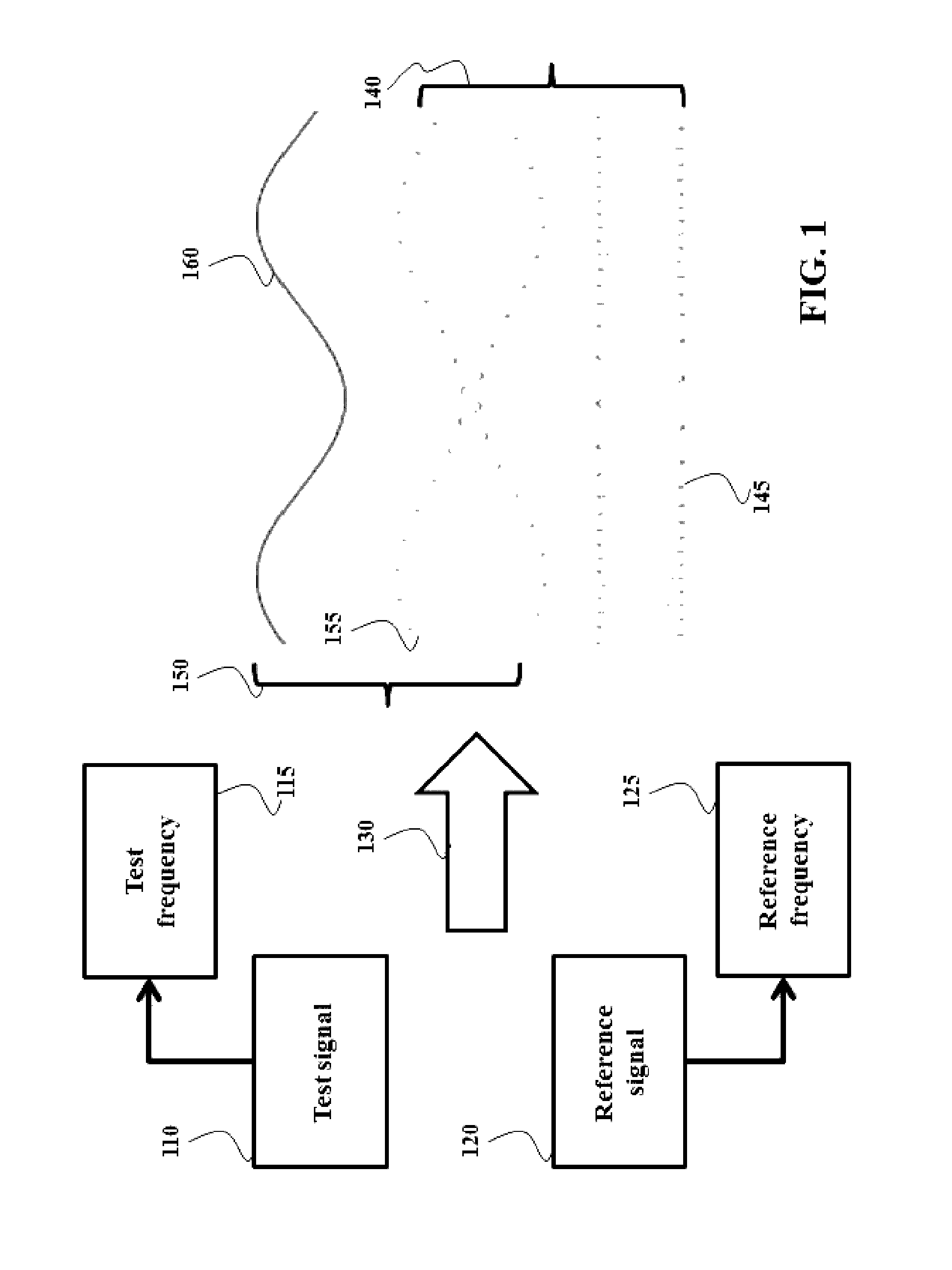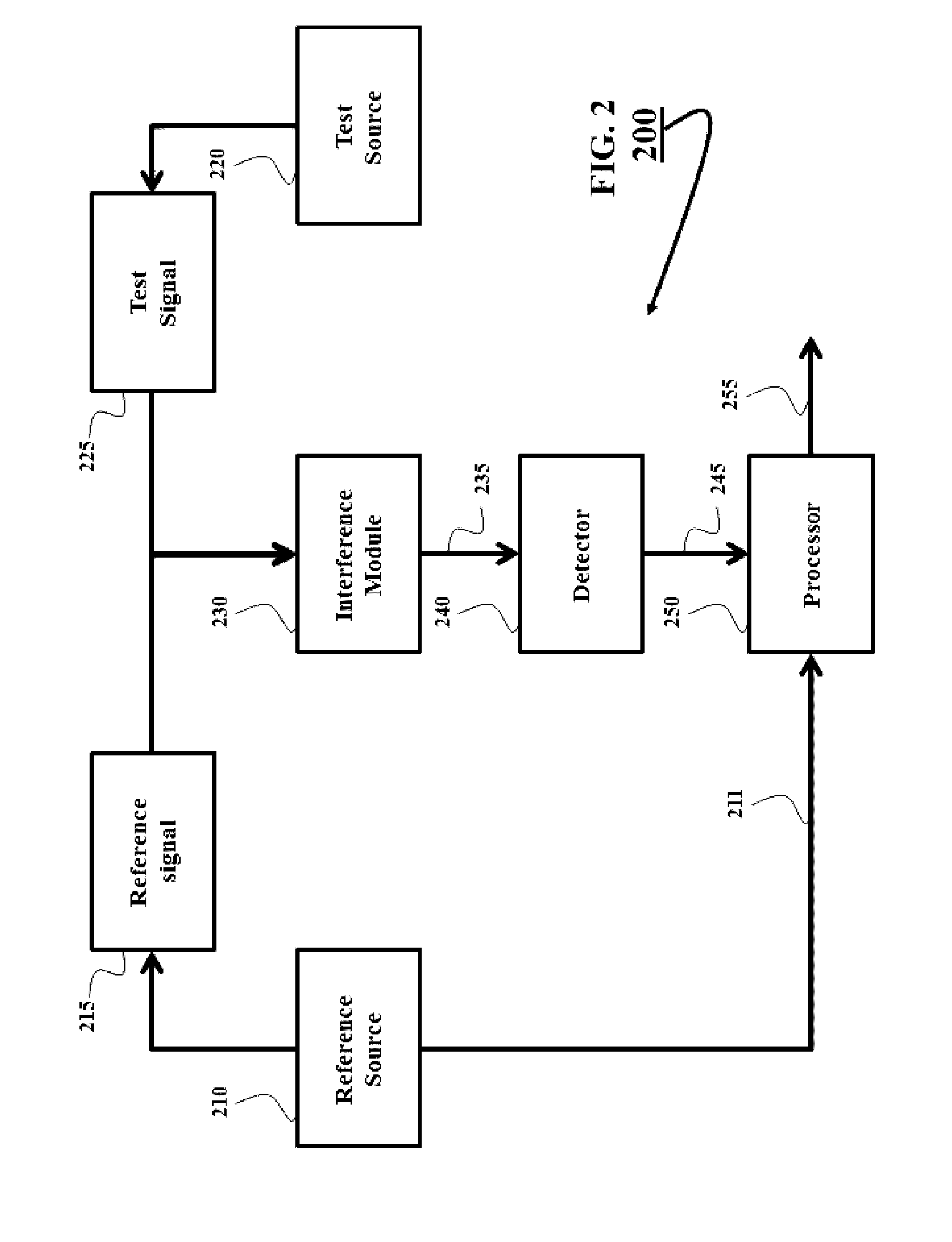Distance measurement by beating a varying test signal with reference signal having absolute frequency value predetermined with a specified accuracy
a technology of distance measurement and reference signal, applied in the direction of measurement device, electromagnetic wave reradiation, instruments, etc., can solve the problems of inability of modern measurement system to measure such signals with required accuracy, and the stability of typical commercial lasers or fiber lasers only exists
- Summary
- Abstract
- Description
- Claims
- Application Information
AI Technical Summary
Benefits of technology
Problems solved by technology
Method used
Image
Examples
Embodiment Construction
[0039]Various implementations of the present invention and related inventive concepts are described below. It should be appreciated, however, that the present invention is not limited to any particular manner of implementation, and that the various embodiments discussed explicitly herein are primarily for purposes of illustration.
[0040]FIG. 1 shows an illustration of a realization employed by some embodiments of the invention to accurately measure high frequencies of the optical signals. If two signals, e.g., a test signal 110 and a reference signal 120 are added 130 to produce a third signal, the signal includes two components oscillating with frequencies depending on the value and differences between the frequencies of the mixed signals. For example, if the frequencies 115 and 125 of the signals 110 and 120 are randomly selected, the resulting signal 140 includes signals 155 and 145, which can be mixed together in an undistinguishable manner.
[0041]However, if two signals 110 and 1...
PUM
 Login to View More
Login to View More Abstract
Description
Claims
Application Information
 Login to View More
Login to View More - R&D
- Intellectual Property
- Life Sciences
- Materials
- Tech Scout
- Unparalleled Data Quality
- Higher Quality Content
- 60% Fewer Hallucinations
Browse by: Latest US Patents, China's latest patents, Technical Efficacy Thesaurus, Application Domain, Technology Topic, Popular Technical Reports.
© 2025 PatSnap. All rights reserved.Legal|Privacy policy|Modern Slavery Act Transparency Statement|Sitemap|About US| Contact US: help@patsnap.com



